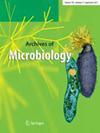Cloning and expression of recombinant arazyme with anti-inflammatory and anti-breast cancer potential
Abstract
Arazyme is an extracellular metalloprotease which is secreted by a Gram-negative symbiotic bacterium called Serratia proteomaculans. There are limited studies on various biological activities of arazyme. This preliminary study was designed to investigate the anti-cancer and anti-inflammatory capacities of recombinant arazyme (rAra) in vitro and in vivo. Arazyme gene, araA was cloned and expressed in E. coli BL21 (DE3) using pET-28a as a vector. Nickel column purification was used to obtain pure rAra. SDS-PAGE and protein assay were used to identify the product and to measure protein content, respectively. Skimmed milk test and casein assay were carried out to assess protease activity. MCF7 cells as a breast cancer cell model were exposed to different concentrations of rAra to study anti-breast cancer potentials using MTT assay. The anti-inflammatory property of rAra was investigated using a murine air-pouch model. PCR and SDS-PAGE data showed that cloning and expression of rAra was successful and the enzyme of interest was observed at 52 KDa. Protein assay indicated that 1 mg/ml of rAra was obtained through purification. A clear zone around the enzyme on skimmed milk agar confirmed the proteolytic activity of rAra and the enzymatic activity was 320 U/mg protein in the casein assay. Cytotoxic effects of rAra reported as IC50 were 16.2 µg/ml and 13.2 mg/ml after 24 h and 48 h, respectively. In the air-pouch model, both the neutrophil count and myeloperoxidase activity, which are measures of inflammation, were significantly reduced. The results showed that rAra can be used in future mechanistic studies and R&D activities in the pharmaceutical industry to investigate the safety and efficacy of the recombinant arazyme.



 求助内容:
求助内容: 应助结果提醒方式:
应助结果提醒方式:


